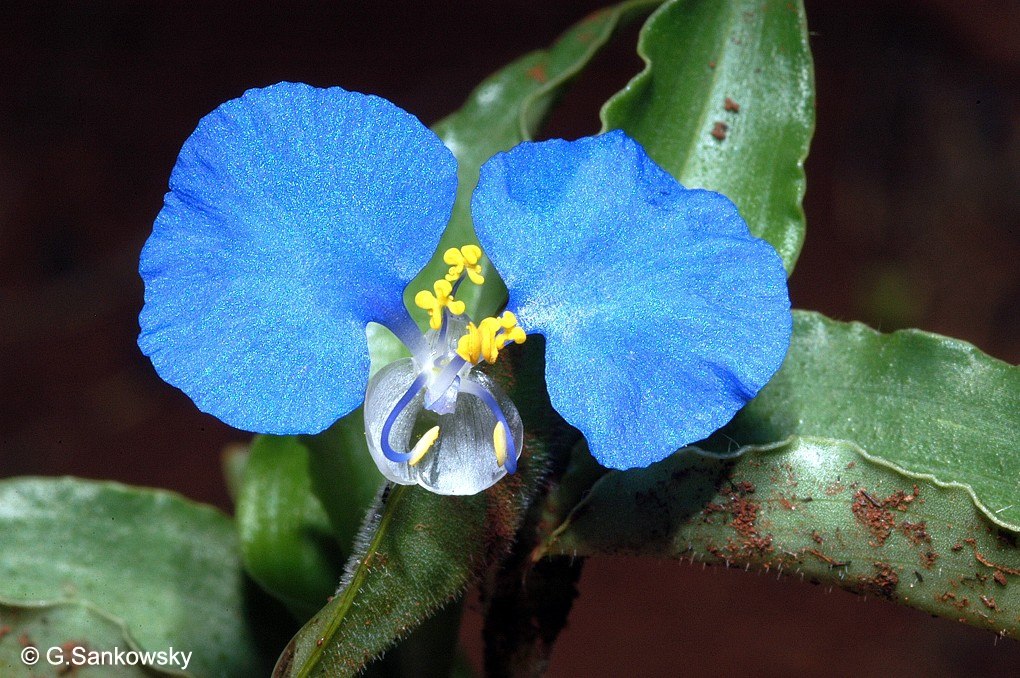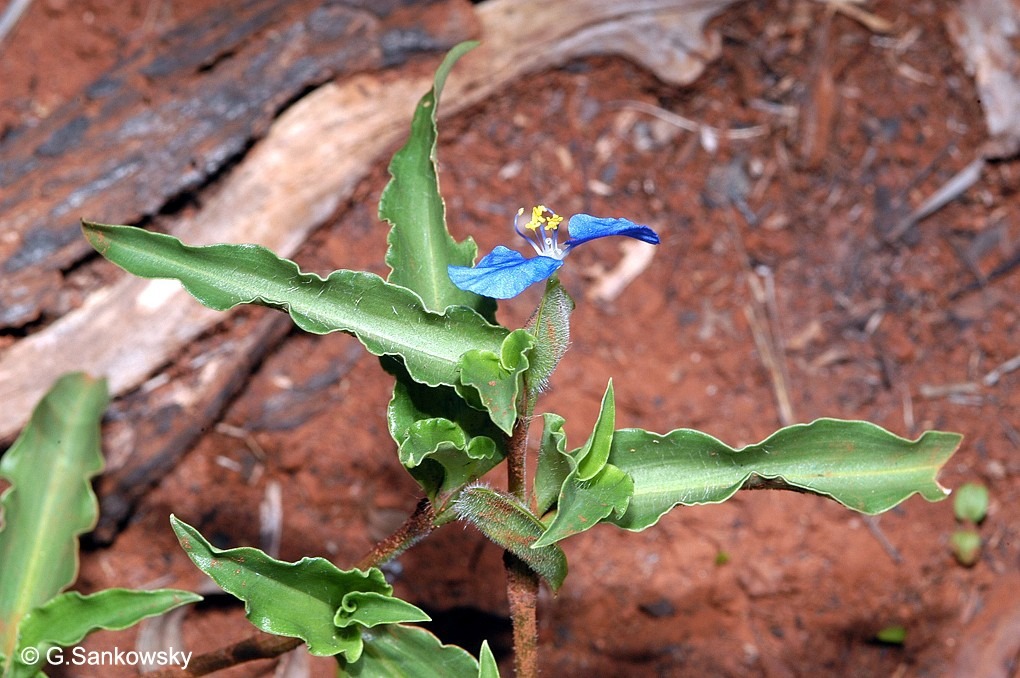Australian Tropical Rainforest Plants - Online edition
Commelina diffusa Burm.f.



Burman, N.L. (1768) Fl. Ind. : 18, t.7, f.2.
Scurvy Weed
Sprawling fleshy herb with ascending branches up to 75 cm tall, rooting at the nodes.
Leaf blades about 20-35 x 7-9 mm. Leaf surface can be either glabrous (i.e. hairless) or hispid (i.e. bristly), subsessile and hispid.
Inflorescence enclosing bracts green. Inner perianth segments pale to bright blue Lower cincinnus with 2-4 flowers, upper cincinnus with 1- several flowers. Upper cincinnus bears only male flowers and has a longer peduncle, while the lower cincinnus bears bisexual flowers on a shorter peduncle. The pedicels are thick and curved and 3-5 mm. The membranous sepals are inconspicuous, 3-4 mm ilong. The upper two petals are 4.2-6 mm. The anther connective (i.e. the tissue connecting the two halves of the anther) of the centre-most stamen has a broad transverse band of violet. The spathes solitary, borne on a peduncle and typically falcate with a cordate to rounded base, acuminate apices and can be either glabrous or hispidulous beneath, 0.8-2.5 cm long, but may be as short as 0.5 cm and as long as 4 cm. Peduncles 0.5-2 cm long.
The fruit has three locules and 2 valves, 4-6.3 x 3-4 mm and contain five seeds. Seeds brown, 2-2.8(-3.2) x 1.4-1.8 mm, testa deeply reticulate.
Features not available.
Juice being used to cure wounds, for inflamed eyes, as part of an external remedy for bone fracture and as a digestive aid (Smith 1979).
Women rub their hair with it in the Torres Strait area (Lawrie s.n.)
Within China it is used as a medicinal herb with febrifugal and diuretic properties. A dye is also obtained from the juice of the petals for use in painting.





